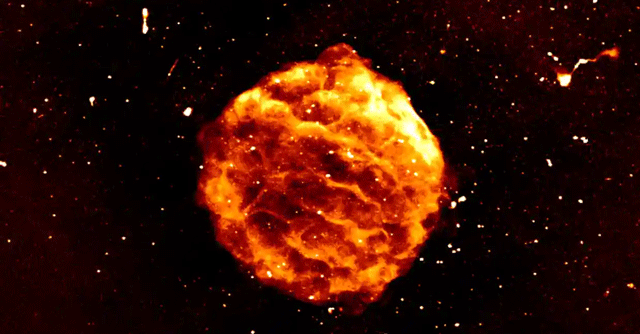
Australia’s most powerful supercomputer kicks off by imaging a dying supernova


Capturing details of faraway members of our universe is an understandably complicated affair, but translating these details into the stunning space images that we see from space agencies around the world is equally difficult. It is here that supercomputers step in, helping process the massive amounts of data that are captured by terrestrial and space telescopes. On August 11, that is exactly what Australia’s upcoming supercomputer, called Setonix, helped achieve.
As its first project, Setonix processed the image of a dying supernova — the last stages of a dying star — from data sent to it by the Australian Square Kilometer Array Pathfinder (Askap). The latter is a terrestrial radio telescope, which has 36 individual antennas working together to capture radio frequency data about objects that are far away in space.
Such data contains intricate details about the object being observed. This not only increases the volume of the data being captured by the telescope, but also puts increasing pressure on a supercomputer to process it into a composite image.

A composite image is essentially the final print that is composed of multiple smaller images. Such processing, particularly for space images, is necessary since the multiple frequencies captured by a radio telescope (such as the Askap) contain various details about the varying facets of an interstellar object — in this case, are the remains of a million-year-old supernova.
Each part of this supernova was initially converted into an image by the Setonix supercomputer, operated by the Pawsey Supercomputer Research Centre in Australia. It then converted all of these images into one giant image, giving the world a visual representation of how the dying supercomputer actually looked like.
To be sure, Setonix is set to become Australia’s most powerful supercomputer, when its entire computing capabilities go live by the end of 2022. At present, Australia’s most powerful supercomputer in use is the National Computational Infrastructure’s Gadi supercomputer — which is 57th on the list of top 500 supercomputers in the world, with peak computing power of 9.26 petaflops per second. When Setonix goes live fully, it is tipped to have maximum performance power of around 50 petaflops per second.

India’s most powerful supercomputer, on the other hand, is 111th on the top 500 list — with the Centre for Development of Advanced Computing’s Param Siddhi-AI supercomputer with 4.62 petaflops per second of computing power.
